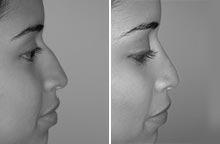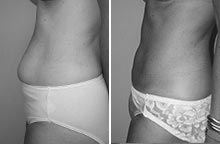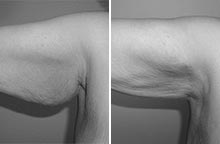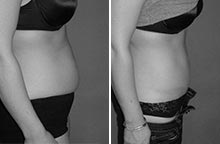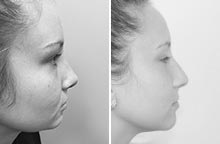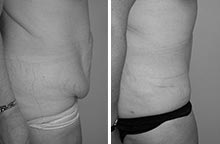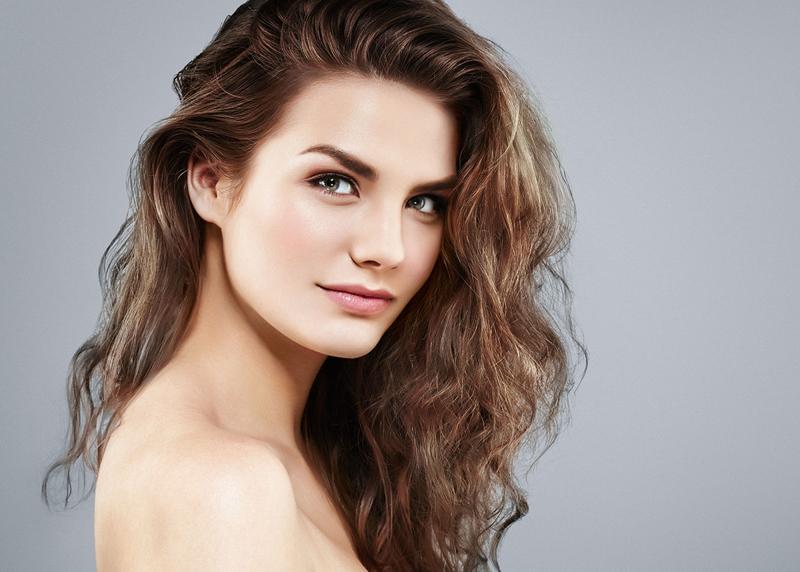Rhinoplasty
Consultations offered at our three convenient locations in New Jersey, Bergen County and Englewood, NJ
Rhinoplasty is performed both to correct breathing problems and to improve the size and shape of the nose to achieve better facial balance. (1) Issues such as overly large nostrils, misshapen bridges, nose width, bumps, or nasal deviation can all be corrected with rhinoplasty.
As a central feature of your face, your nose plays an important role in bringing balance and symmetry to the face. (1)
Dr. David Abramson is a skilled reconstructive surgery specialist with a reputation for excellence in rhinoplasty, and his experienced team of medical professionals ensures your comfort throughout every procedure. As a leader in his field, he was recognized as a 2024 and 2025 New Jersey Top Doctor.
If you are interested in enhancing your nose’s appearance and/or function, please contact our office today to learn how rhinoplasty can give you a more pleasing, proportional balance to your face while also enhancing your self-esteem and confidence. You can reach us online by submitting our online contact form, or call any of our locations in the New York and New Jersey area directly.
- Englewood: (201) 731-3134
- Franklin Lakes: (201) 731-3134
- Manhattan: (212) 774-1828
Contents
About Rhinoplasty
Rhinoplasty is a sophisticated procedure that holds significant importance in the field of cosmetic surgery. The nose is central to our face and can dramatically influence one’s overall appearance. It is made up of bone, cartilage, skin, and tissue, and serves not only aesthetic purposes but also critical functions such as breathing. Genetic factors, trauma, or previous surgeries can lead to a nose that individuals feel does not match their facial features or impacts their ability to breathe properly.
The top portion of the nose is bone, while the tip is made of cartilage. Rhinoplasty can alter the bone structure, the cartilage, the nasal skin, or a combination. Each person’s anatomy differs, so there is no set list of steps taken in rhinoplasty procedures. Everyone receives a personalized approach that will benefit them best, ensuring results tailored to their anatomy and desired aesthetic. While rhinoplasty is one of the most common cosmetic surgical procedures performed throughout the world, this personalized approach also makes it complex. Surgeons have to account for each patient’s goals while also considering their age, appearance, genetics, heritage, and more to produce results that meet their expectations while also looking natural. (1)
There are different reasons people may decide to undergo rhinoplasty, two of the main concerns being functionality and cosmetic improvement. Patients should be aware of what aspects of this procedure are functional and what aspects are cosmetic.
Functional Rhinoplasty
Some patients have functional nasal problems that can cause difficulty breathing. These problems can include a deviated septum or enlarged turbinates, as well as problems further back in the nasal airway. Straightening the septum (septoplasty) will open the nasal passage and make breathing easier. Nasal obstruction can be a problem among people who have received nose surgery from previous surgeons. Trimming too much cartilage can cause the nose to be pinched, constricting airflow.
Cosmetic Rhinoplasty
Cosmetic deformities of the nose can include a dorsal bump, a wide or drooping tip, a wide base of the nose, as well as other deformities. If the nose is too large, Dr. Abramson can address this by shaving off the necessary amount of cartilage or bone. Alternatively, if you perceive your nose to be too small, cartilage can be added from either an ear or rib graft. You may also find your nose needs revision cosmetic enhancements due to past surgeries not delivering your expectations.
Benefits
Rhinoplasty procedures offer patients numerous advantages. Under the expert treatment of Dr. Abramson, our patients experience benefits like:
- Enhanced appearance: Rhinoplasty can reshape and redefine a nose that may seem disproportionate to the rest of the face.
- Improved breathing: For individuals suffering from breathing problems, correcting structural issues can provide significant relief.
- Increased confidence: Many patients report higher self-esteem and confidence after undergoing rhinoplasty.
- Improved nasal aesthetics: The procedure allows for better nasal symmetry and proportionate relationships with other facial features.
- Long-lasting results: Unlike several non-surgical options, surgical corrections typically offer permanent results.
- Deformity correction: Rhinoplasty can effectively repair congenital irregularities, traumatic injuries, or scarring from previous surgeries.
- Functional improvements: Septoplasty procedures included in rhinoplasty can clear blockages, enhancing airflow significantly.
- Customization: Surgical methods can be tailored to meet each patient’s unique anatomical structure and personal goals, ensuring specific needs are addressed appropriately.
Candidates
Rhinoplasty can be performed on both men and women alike. Most surgeons prefer that rhinoplasty patients have completed their facial growth, which usually happens after the teenage years. It is important to be in good health and a non-smoker, or at least willing to quit temporarily.
Every person’s nose is anatomically different. Although you will be shown before and after photos, it is important to remember that results vary between patients. Dr. Abramson will explain the realistic expectations that you can expect. If keeping your ethnic identity is important, an ethnic rhinoplasty can be performed. This will enhance either the cosmetic look or functionality while maintaining the patient’s unique traits. Dr. Abramson’s goal is to improve the shape or functionality of your nose while bringing balance to your face.
Personal Consultation
During your consultation, you will explain any issues you may have with your nose. A thorough examination of your nose will be performed. Dr. Abramson will create a personalized procedure plan based on your aesthetic goals and examination findings. This meeting provides an opportunity to ask questions and ensure that you feel confident in moving forward with the procedure.
Take a moment to schedule your consultation today by submitting our online contact form or by calling any of our locations directly.
Preparation
Before your rhinoplasty, Dr. Abramson will request that you complete certain medical tests and examinations. After analyzing these results and examining your medical history, Dr. Abramson will provide you with a full list of preparatory instructions. You may need to adjust or discontinue taking certain routine medications, and patients should avoid anti-inflammatory medications before surgery as well. Nicotine use and alcohol consumption should also be ceased. We ask that patients arrange transportation home from their procedure, as they will be unable to drive themselves. You may also need to fast for a set timeframe before your appointment.
Procedure
Rhinoplasty is performed at our surgery center or the hospital under general anesthesia. Patients also receive local anesthetic on and around their noses to reduce post-procedure discomfort.
There are two ways to access the structures inside the nose. The first is to make an incision in the center of the nose along the column that connects both sides (columella). This technique is known as an open rhinoplasty and provides full access to the underlying nasal structures. (2,3) The second is a closed procedure where incisions are made on the inside of the nose. Each approach has advantages and disadvantages for the surgeon, the patient, and the type of work that can be done. Dr. Abramson and his talented staff can answer any questions you have about this process.
Open Rhinoplasty
The open procedure is performed by making an incision in the tissue between the nostrils, also known as the columella. Skin and soft tissue of the nose are lifted so that the surgeon can access the nasal cartilage. (3) Cartilage is trimmed and sculpted into the new contour. In many cases, cartilage grafts are taken from the nasal septum, but the ear or rib may be used if more tissue is needed. The skin and tissue are then redraped over the nose, and the incisions are sutured. Swelling and minor discomfort are normal, but recovery generally takes only one or two weeks. Any scarring that may come from this procedure is small and fades over time.
Closed Rhinoplasty
The closed procedure involves similar steps as an open procedure; however, the incision is made inside the nose, not externally. (2) This makes for non-visible scarring, and the skin does not need to be lifted. There is less swelling and damage to the tip of the nose associated with this procedure. This procedure is often shorter and may involve less swelling, though this depends on the complexity of the surgery.
Primary vs. Secondary Rhinoplasty
Primary rhinoplasty refers to surgery performed on the nose for the first time, whether cosmetic or functional. The goal of primary rhinoplasty is to address all cosmetic and functional issues with one procedure, avoiding the need for secondary procedures. This can be performed as either an open or closed procedure.
Secondary rhinoplasty refers to surgery performed on the nose after the patient has already undergone one or more previous nose surgeries. This is also sometimes referred to as revision rhinoplasty. This involves further altering the cosmetic look of the nose or changing/improving functionality from a previous surgery.
Recovery
Post-surgery, you will observe some swelling and bruising, which is entirely normal. Recovery time can differ among patients. Primary symptoms generally alleviate within one to two weeks, but full recovery may take several months. A nasal splint is applied after your rhinoplasty procedure and should be worn for 5 to 7 days. It is ideal to take a bath rather than a shower while wearing the splint or bandage. Bruising below the eyes is very common and can last for 7 to 10 days. Patients can usually return to work in approximately a week, although final results can take anywhere from 6 to 12 months.
During the recovery period, you should refrain from making over-the-top facial expressions. Please do not blow your nose until instructed by the doctor. If you have allergies, ask your surgeon and primary care physician about using medications to prevent sneezing. If you wear glasses, you may consider taping them to your forehead since you will be unable to rest them on your nose for a while. You should also avoid partaking in strenuous activities for about a month. Pain medication can be prescribed if you feel as though you may need it. Typically, patients return to their social lives in just a couple of weeks without anyone recognizing signs of a surgical procedure.
After treatment, Dr. Abramson will give you specific, detailed instructions on how to care for yourself so you get the best possible outcome and reduce the risk of postoperative complications.
Results
After a rhinoplasty, many patients notice immediate improvements, although visible swelling may obscure final results initially. Over time, your nose will heal beautifully, revealing enhanced contours, improved symmetry, and, if applicable, improved breathing. Most patients find they enjoy increased self-esteem and satisfaction with their new look. Dr. Abramson prioritizes natural-looking results, aiming to rejuvenate while maintaining your unique appearance.
Cost of Rhinoplasty in New York and New Jersey
The price of your rhinoplasty will depend on your unique goals and procedure plan. Undergoing additional procedures, whether on the face or body, will additionally change the price. After a consultation with Dr. Abramson, you will receive a comprehensive price quote that reflects all measures required in your treatment. Our practice also offers payment plans to help make our treatments more accessible.
Schedule your initial consultation today to begin planning your rhinoplasty. If you have any questions or prefer to schedule over the phone, please call any of our New Jersey offices or our Manhattan office directly.
FAQ
Is rhinoplasty painful?
Most patients report minimal discomfort following surgery, managed effectively with prescribed pain medications. Patients will remain relaxed throughout the procedure itself because we employ anesthesia.
How long does it take to recover from rhinoplasty?
Patients typically return to work and regular activities within one to two weeks, but complete healing can take several months. Dr. Abramson will discuss your specific recovery timeline during your consultation.
Can rhinoplasty correct a deviated septum?
Yes, septoplasty is often performed in conjunction with rhinoplasty to correct breathing issues.
Are rhinoplasty results permanent?
Surgical changes from rhinoplasty are considered permanent, though the aging process may continue to affect the nose’s appearance over time.
What if I do not like my rhinoplasty results?
While most patients are satisfied with their results, it is important to communicate your concerns with Dr. Abramson during follow-up appointments. Revision rhinoplasty procedures are available to correct anything you dislike.
References
- Fichman M, Piedra Buena IT. Rhinoplasty. PubMed. Published 2020. https://www.ncbi.nlm.nih.gov/books/NBK558970/
- Tasman AJ. Rhinoplasty – indications and techniques. GMS Current Topics in Otorhinolaryngology, Head and Neck Surgery. 2008;6:Doc09. https://pmc.ncbi.nlm.nih.gov/articles/PMC3199847/
- Raggio BS, Asaria J. Open Rhinoplasty. PubMed. Published 2021. https://www.ncbi.nlm.nih.gov/books/NBK546628/
Want to see your new you before the procedure?
With Crisalix's 3D imaging technology you can see how you would look post-procedure if full 3D.
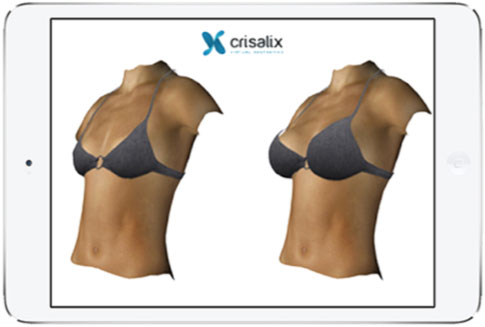 Learn More
Learn More